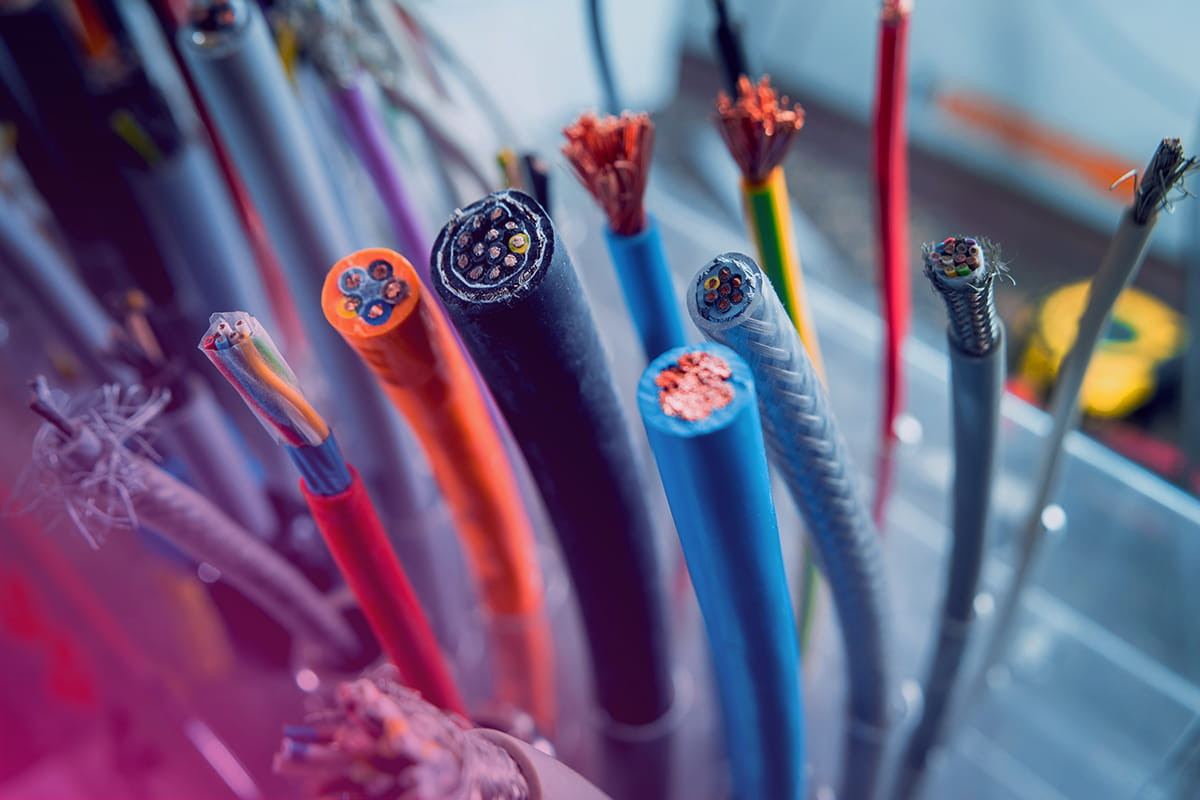
What is NYA, NYY, NYM Cable? What are the Differences?
What is in this article?
Next-generation electrical cables create a low-resistance pathway between two points, facilitating the safe and efficient transfer of electric current from one point to another. These cables often feature specialized insulation layers, superconducting wires, and protective armor, making them suitable for use in open, semi-open, or enclosed spaces.
NYA, NYY, and NYM are specific types of electrical cables, each with their own structural and design variations. These variations make NYA, NYY, and NYM cables well-suited for different electrical applications, thereby ensuring efficient power distribution.
Let's take a closer look at the highlights of these three different cable types.
The Importance of Using the Right Cable for the Project
Choosing cables that fit project requirements is both necessary and important for many reasons. The things to consider when choosing cables for a specific project can be listed as follows:
Security
The first element to be prioritized when installing an electrical system is safety. Preferring cables that do not fit the project requirements may prevent voltage, current and insulation requirements from being met smoothly.
Cables that are not suitable for the system, voltage range, electric current or environmental conditions may cause electrical leakage or short circuit. The impact of electric current upon the human physique constitutes a matter of considerable gravity. Opting for cables that satisfy the requisite specifications is instrumental in ensuring the secure functioning of the electrical system, thereby diminishing the likelihood of untoward incidents.
Compliance with Regulatory Norms
Electrical installations, whether affiliated with a residential structure, commercial establishment, or individual electrical appliances, must be orchestrated in strict adherence to prevailing regulations. Such regulatory considerations may encompass aspects such as the voltage rating of the cable, the quality of insulation material, thickness, fire-resistance, and compatibility with specific environmental conditions.
High Performance
The electrical prerequisites for each endeavor are inherently distinct, necessitating cables that are bespoke to the individual project's requirements. O The employment of such specialized cables ensures that the electrical system performs at its zenith while abiding by critical safety parameters.
Opting for cables with the appropriate voltage ratings, robust current-carrying capabilities, and superior insulating attributes amplifies the system's efficiency in the transmission of electrical power. This mitigates voltage fluctuations while reducing the incidence of overheating and power dissipation.
Long-Term Use
Open electrical systems, in particular, may be subjected to a gamut of environmental adversities, such as elevated temperatures, high humidity, mechanical strains, aqueous contact, and exposure to sunlight and wind.
Selecting cables meticulously engineered to withstand these specific conditions substantially enhances the longevity of the installed system. Moreover, these adaptive cable models diminish the need for periodic replacement, maintenance, and repairs, thereby preserving system performance over time.
Cost Efficiency
Thanks to the selection of cables designed to meet specific project requirements, one can achieve the most fitting solution for installation prerequisites. Cables that lack these specialized attributes frequently necessitate ongoing maintenance, repair, or substitution. Conversely, cables that are in complete harmony with the project's specifications operate in a stable, secure, and efficient manner, thereby minimizing operating expenditures.
What Is NYA Cable? Where Is It Used?
Covered with a single layer of flexible PVC insulation material, NYA cable types are widely used in different areas to provide power transmission. The NYA electrical cable, notable for its multifaceted attributes, is a suitable choice for both residential and commercial implementations.
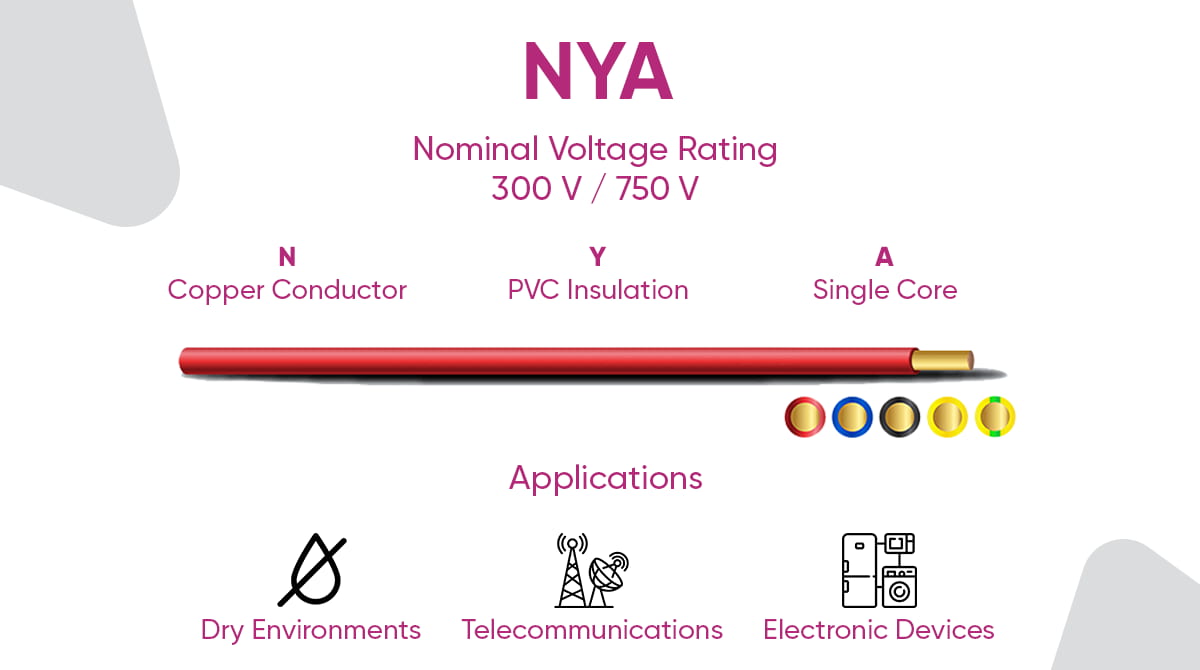
-
What NYA Cable Stands For
N: Copper conductor
Y: PVC external insulation
A: Single core copper cable (copper cables included in a single cable set)
-
Scope of Use
- Dry environments
- Closed channel systems
- Electronic devices
-
Nominal Voltage Rating
300V / 750V
The single copper wire within NYA cables ensures superior electrical conductivity. This homogeneous copper composition minimizes power loss during energy transfer, facilitating stable electricity transmission. Coated in PVC material, the copper wire insulates the electrical current, offering protection against short circuits and electrical shocks. The thermoplastic nature of the PVC insulation makes these cables adaptable to a variety of settings.
NYA cables find applications in a range of structures, including electrical installations for homes, shopping centers, offices, warehouses, factories, efficiently distributing electricity to various points like plugs, switches, and lighting fixtures. Their single copper conductor design minimizes power loss, providing excellent energy transfer while substantially reducing the risk of short circuits.
Ideal for residential and industrial settings, NYA cables are well-suited for power transfer between motors, generators, control panels, and power components of machinery. Commonly manufactured as single pieces, they are also frequently used in telecommunication systems such as power centers and server infrastructures, and for telephone or data transmission.
-
Main Features of NYA Cables
- Produced with a PVC sheath, these cables can also be furnished with extra insulation to meet the specific requirements of applications.
- They are suitable for in-wall, in-fixture, above-plaster, and below-plaster applications.
- They help to build reliable, stable and efficient communication infrastructures.
- Optimal working efficiency can be maintained up to 70 degrees.
- Low risk of overheating, short circuit and fire.
What Is NYY Cable? Where Is It Used?
It has strong insulation and a flexible design, along with a copper core that ensures efficient electrical flow. It is a solid pick for both dry and moist settings, as long as it is not placed under any mechanical stress. NYY cables are widely used in public areas such as power grids, industrial plants, power plants, street lighting and traffic lights.
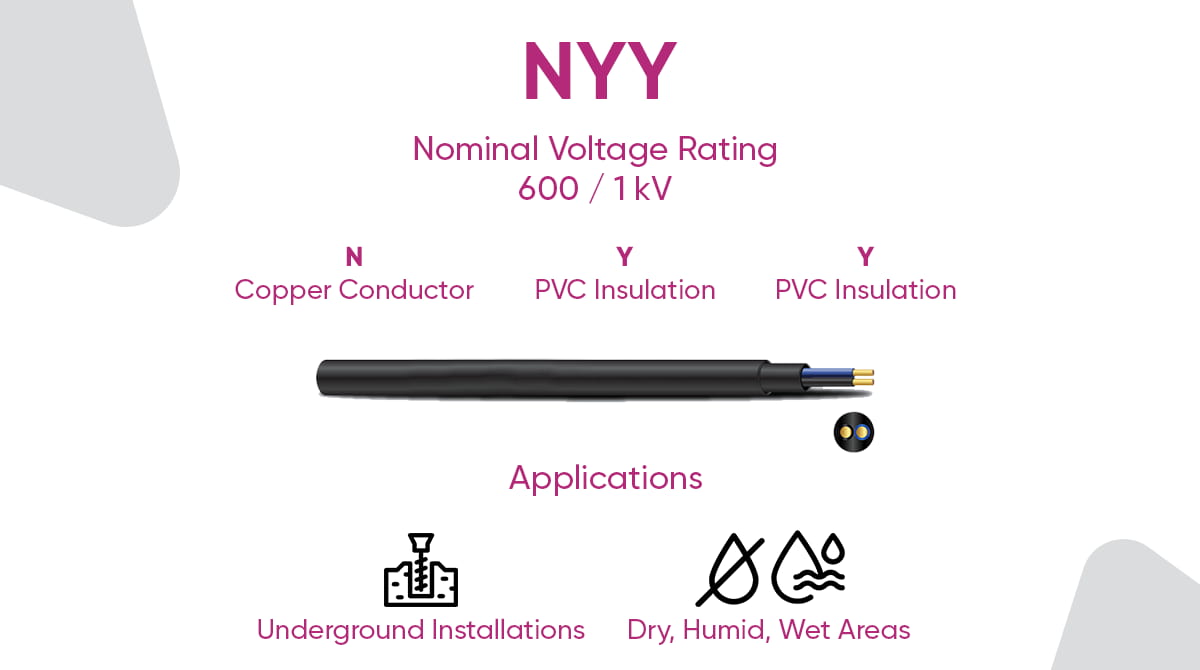
-
What NYY Cable Stands For
N: Copper Conductor
Y: PVC inner filling insulation
Y: PVC outer layer insulation
-
Scope of Use
- Environmental applications
- Open or closed systems
- Underground installations
- Dry, humid, wet areas
-
Nominal Voltage Rating
600V / 1kV
NYY cable models typically feature dual-core copper wires and come with a range of coatings and filling materials. The inner PVC coating covering the copper wire helps prevent short circuits. The flexible PVC filling material on the copper wire makes NYY cables suitable for underground installations, wet or dry areas.
NYY cable models, also referred to as underground cables, are suitable for safe use in areas where there are no significant mechanical loads or stresses. New generation NYY cables are suitable for static installations, industrial settings, cable ducts, or in-pipe electrical systems.
Usually crafted for low to medium voltage applications spanning from 600 volts to 1000 volts, NYY cables stand out as versatile options due to their exceptional current-carrying capabilities. It represents a cost-effective solution for environments lacking environmental protection ducts or experiencing substantial mechanical stress.
Tailored for outdoor use, NYY cable sets are well-suited for direct burial or for installation within underground ducts. Thanks to its durability against environmental factors like humidity, wind, and UV rays, it is a popular choice for garden installations, farms, outdoor lighting systems, and various other outdoor electrical applications.
-
Highlights of NYY Cables
- It is a type of cable with PVC insulation on a single or multi-stranded copper conductor.
- It is an economical solution for power or control cables that do not require mechanical protection.
- It can be used in power distribution and lighting circuits outdoors or underground.
- The operating temperature is 70 degrees maximum and the short circuit temperature is 160 degrees.
- It is suitable for indoor, underground, wet and dry environments.
What Is NYM Cable? NYM Cable Scope of Use
NYM cables, sometimes referred to as low voltage cables, serve as electrical cables employed in electrical installations within residential, commercial, and industrial structures.
NYM cables, also known as European cables, are the ideal choice for indoor applications.
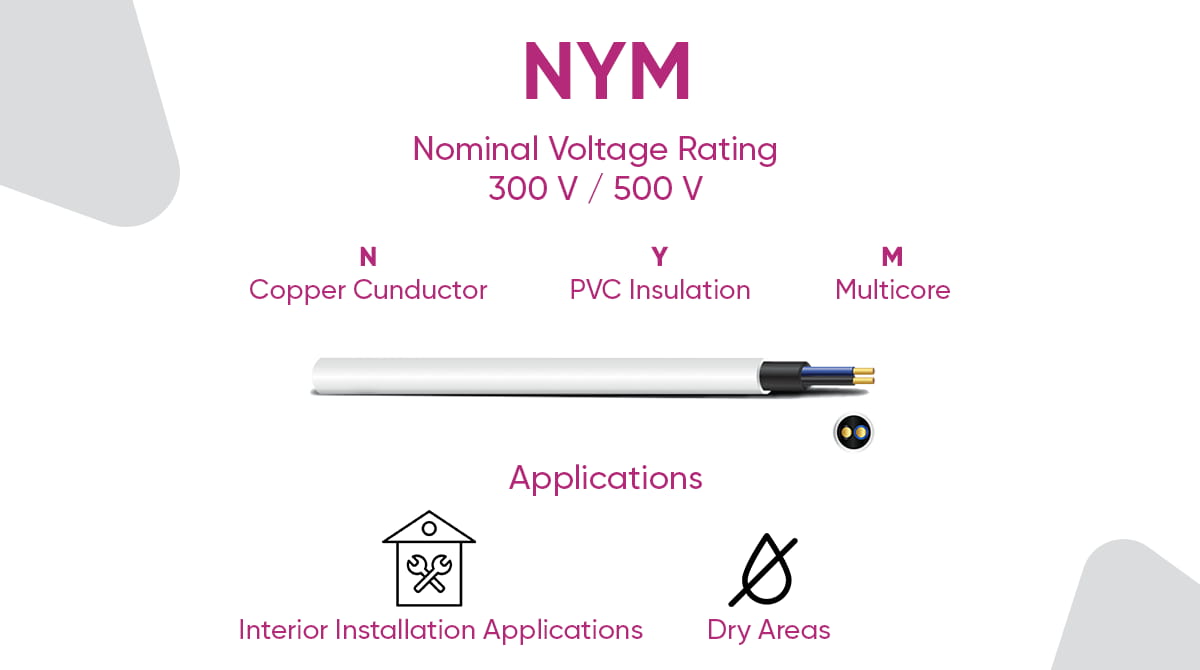
-
What NYM Cable Stands For
N: Copper Conductor
Y: PVC insulation
M: Multi-core
-
Scope of Use
- Interior installation applications
- Closed type systems
- Dry areas
-
Nominal Voltage Rating
300V / 500V
NYM cables are typically channeled through cable ducts to safeguard the copper conductor and maintain a neat and organized appearance. When NYM cables are installed within a duct system, they benefit from insulation against external environmental factors, which helps preserve the sensitive cable surfaces. This results in an extended lifespan and enhanced efficiency in usage. Designed for low-voltage power distribution, the new generation NYM cables are a stable power transmission tool for industrial applications or electrical machinery.
NYM cables, which can be incorporated into in-wall cavities, cable ducts, or power lines, find utility in power distribution networks and lighting circuits. These cables are highly favored in settings like residences, offices, workshops, and factories, where they facilitate the transmission of power to electrical devices such as plugs, fixtures, and switches.
Cables with multiple copper wires also have color codes for easier identification. Installations compatible with electrical cable colors minimize confusion during installation, maintenance and repair processes.
-
Highlights of NYM Cables
- PVC-coated insulation material allows long-term use in closed systems.
- It offers tolerance up to 70 degrees operating temperature and 160 degrees short circuit temperature.
- Voltage range of 300 - 500V makes it ideal for low voltage cables.
- Suitable for complicated applications with its multicore structure.
Highlights of NYA-NYY-NYM Cables and the Differences Between Them
NYM, NYA, and NYY are well-recognized electrical cables extensively employed across various applications. The differences between these cable types can be summarized as follows:
- NYM cables are primarily suitable for fixed installations in structures such as residential or industrial facilities. Crafted for use indoors, NYM-type electrical cables serve as on-site connectors for power distribution systems and lighting circuits. Consisting of a large number of copper conductors with PVC insulation, it is a widely preferred cable for dry or closed systems.
- NYA cable also known as NYAF or NYAFY, is a flexible, strong, versatile electrical cable. It is mostly preferred for small-scale projects, portable applications or portable installations. Extension cords, small appliance cables, equipment connection cables are good examples of NYA cables. Unlike NYM cables, NYA cables are not designed for fixed installations such as enclosed underground applications, walls or duct systems. NYA cables, which are single core, are jacketed with a soft, thick and dense PVC insulation to provide mobility.
- NYY cables, featuring a thicker PVC insulation layer and multiple cores, stand out from NYA and NYM cables due to their distinct characteristics.
- While NYA cables find application in household electrical appliances, and NYM cables are suitable for indoor residential electrical setups, NYY cables excel in more challenging environments like underground installations or wet locations. NYY cable sets with a rated voltage range of 0.6/1 kV are also a good choice for electrical machines that have high power requirements.
Which type of cable do you believe aligns best with the requirements of your project? Tell us your opinion in the comments section.

 Online Services
Online Services Application Inquiry
Application Inquiry Pay Assurance Fee
Pay Assurance Fee Query Installation Number
Query Installation Number Compensation Fee Inquiry
Compensation Fee Inquiry Automatic Payment Order Inquiry
Automatic Payment Order Inquiry Partnership
Partnership

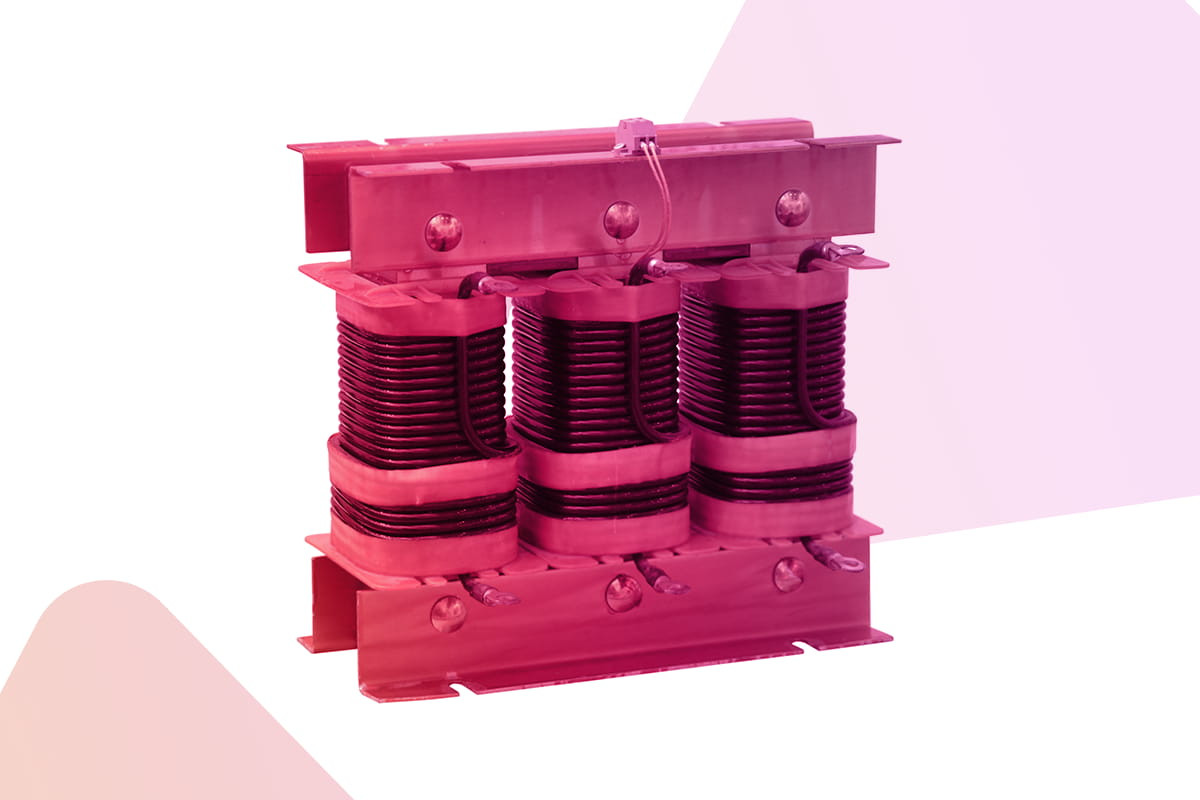
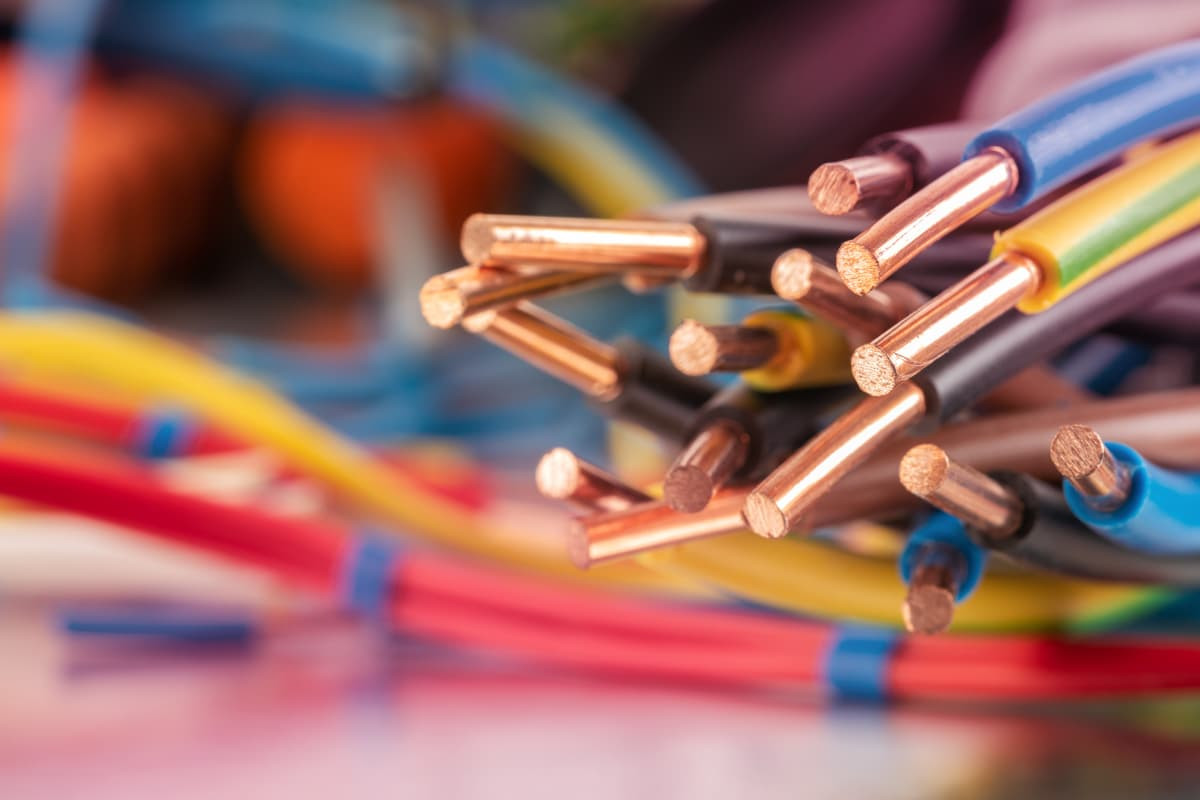
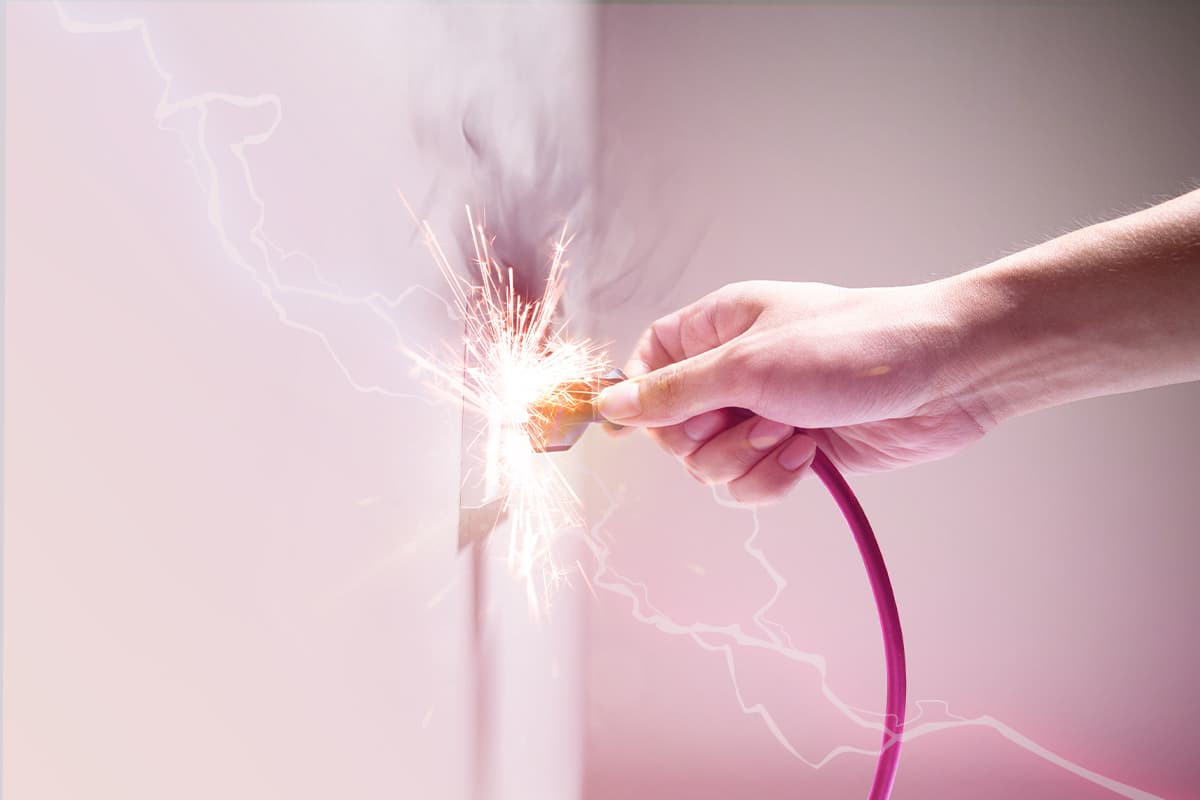
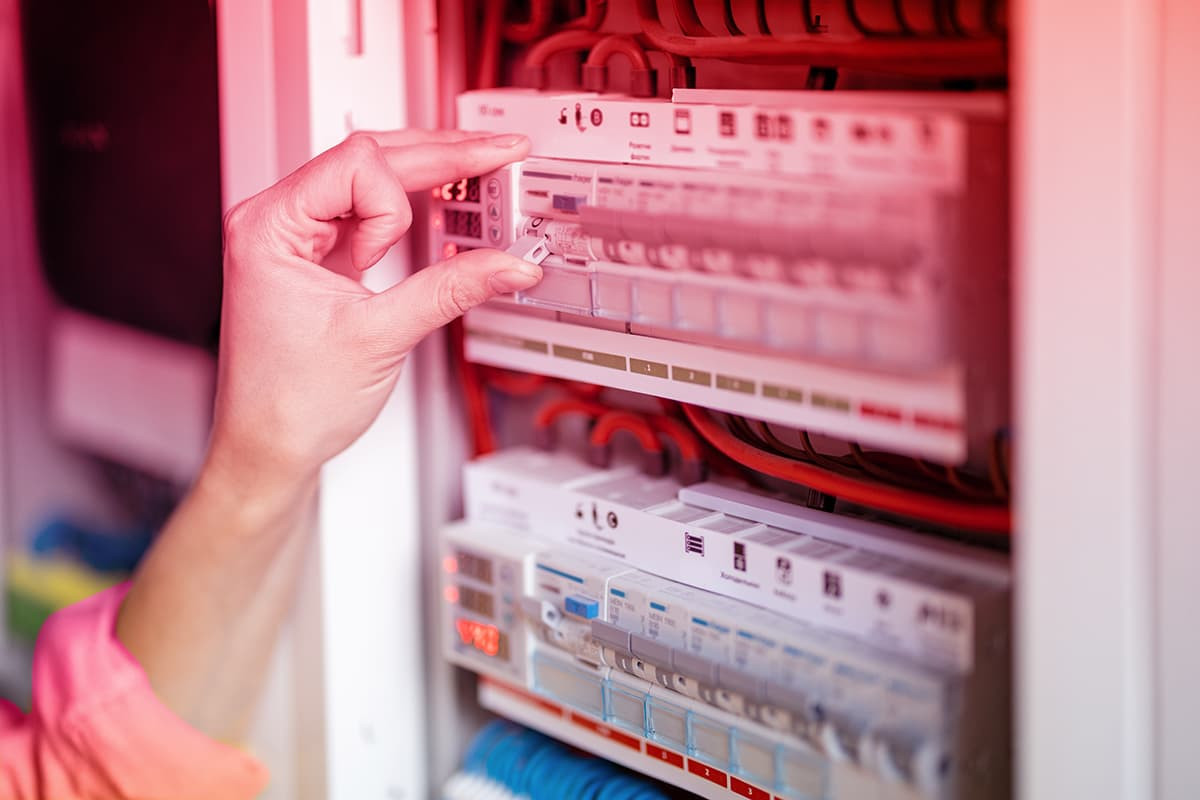
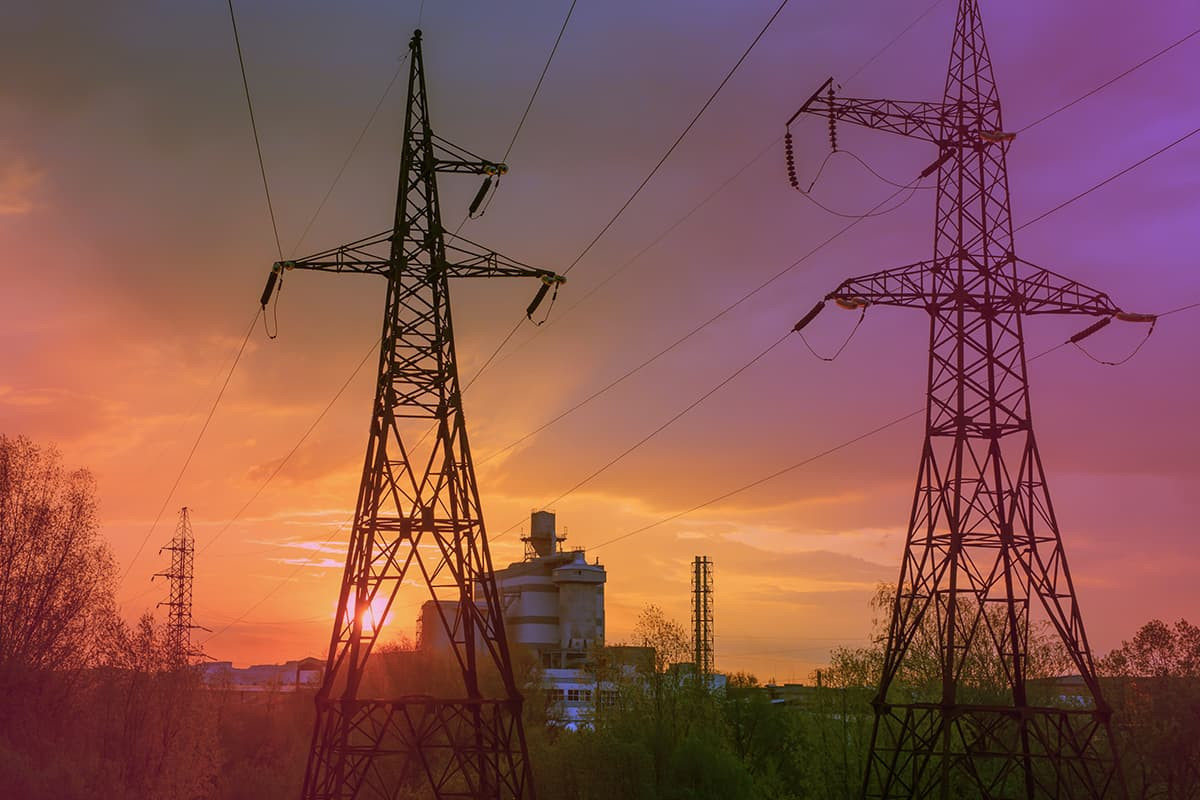

Leave a Comment
Comments (3)
İbrahim Baran Uslu
Ben de bu sitede yer alan bu güzel bilgilere çok teşekkür ederim. Sn. Mutlu Topçu'nun sorusuna cevap olabilir mi diye paylaşmak istedim. Herkese iyi çalışmalar, hayırlı işler. https://www.elektrikrehberiniz.com/kablo/kablo-nedir-15564/#google_vignette
M
Mutlu topcu
Merhabalar kolay gelsin. Benim sorum şu şekilde olacaktı sorumun cevabını ararken başka konuda kısmen bildiğim bir konuda teknik olarakta aydınlandım teşekkürler . Sorum şu, ben bir elektrikli alıcıya veya besleme hattı çekilmesi gereken bir yere çok damarlı mı veya tek damarlı mı kablo kullanmayı neye göre belirlemem gerekiyor (çok telli ile karıştırmayalım). Yani mesela 4*10 veya 4*16 olup tek damarlı ve çok damarlı kabloyu neye göre belirliyoruz. Avantajı var mı artısı eksisi nedir. Hangi yükte tek damarlı kullanmayız. Teşekkür ederim
Y
Yılmaz Teber
Bu güzel aydınlatma için. Tşkler. Ev için NYA uygun ne zamandır hangisini alıyım derken doğru cevapı burda buldum Tşkler
Aydem Perakende
Merhabalar,
Yazımız faydalı olduysa ne mutlu bize.
Enerji dolu günler dileriz.